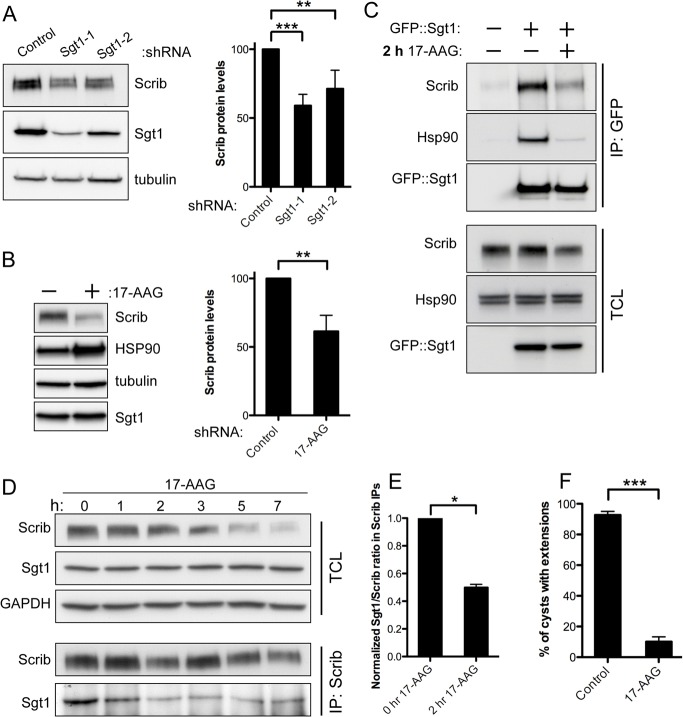Fig. 4.
Scrib is an Sgt1–HSP90 client protein. (A) Total cell lysates for Sgt1-shRNA-treated cells were probed for the indicated proteins and compared to control cell lysates. Scrib protein levels were normalized using an anti-tubulin loading control and quantified for a minimum of three separate experiments. Dunnett's multiple comparison test was used. (B) Total cell lysates for 0.5 µM 17-AAG-treated cells were probed for the indicated proteins and compared to control cell lysates. Data was quantified as in A. (C) Immunoprecipitation of GFP from GFP-Sgt1- or mock-transfected cells after 2 hours of 0.5 µM 17-AAG treatment. Although the total levels of Scrib protein remain similar at this early timepoint, a dramatic reduction in the association between Sgt1 and both HSP90 and Scrib can be seen following western blotting of the IPs for these proteins. (D) Timecourse, in hours (h), of 0.5 µM 17-AAG-treated MDCK cells. Treated cell lysates were also used to IP Scrib and blot for the presence of Sgt1. Following the first hour of 17-AAG-mediated HSP90 inhibition, the amount of Sgt1 associated with Scrib was reduced. This reduction in Scrib–Sgt1 association occurred prior to the loss of Scrib protein stability, apparent at the 3 hour timepoint. (E) Quantification of the Sgt1/Scrib ratio in Scrib IPs after 2 hours of 17-AAG treatment. Ratios were normalized to untreated control sample IPs. (F) 4-day-old cysts were treated for 48 hours with HGF in the presence or absence of 50 nM 17-AAG. After 48 hours cells were fixed and stained for actin. Percentage of cysts forming extensions was quantified for three separate experiments. 17-AAG-treated cysts with cleaved caspase-3 staining were excluded from the extension formation analysis. *P<0.05, **P<0.01, ***P<0.001.

